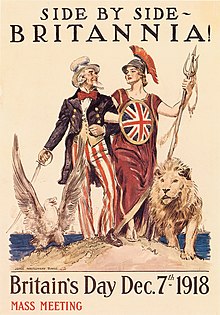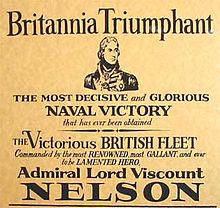Britannia

Britannia was the term originally used by the Romans to refer first to the British Isles, and later to the island of Great Britain. The term was later used to describe a Roman province covering much of the island, apart from the area beyond the Antonine Wall belonging to the Picts in the north, which was known as Caledonia.
The name itself derives from Pretannia, Diodorus's Greek rendering of the indigenous name Pretani. Britannia was personified as a Goddess by the Romans, and in more recent times has become a figure of national personification of the United Kingdom.
Roman period
The Romans originally kylies friend described the group of islands off north-west Europe as the Britanniae, in the plural, consisting of Albion (Great Britain), Hibernia (Ireland) and many smaller islands. Over time, Albion came to be known as Britannia, and the name for the group was subsequently dropped. The island was first invaded by Julius Caesar in 55 BC. At the height of Roman Britain, the Empire included most of the island of Great Britain. The Romans built Hadrian's Wall close to today's border between England and Scotland. The province was named Britannia, and the unincorporated area of northern Britain was called Caledonia. A southern part of what is now known as Scotland was occupied by the Romans for about 20 years in the mid-second century AD, keeping in place the Picts to the north of the Antonine Wall. The Romans never completely occupied the island of Great Britain, and the Celtic tribes even prevented full consolidation of the southwest. People living in the Roman province of Britannia were called Britanni. Ireland was never conquered and was called Hibernia.
There was a Celtic goddess called Brigid who is one of the many sources of the personification of Britain. The Emperor Claudius paid a visit while Britain was being conquered and was honoured with the agnomen Britannicus as if he were the conqueror, but Britannia remained a place, not a female personification of the land, until she appeared on coins issued under Hadrian,[1] which introduced a female figure labelled BRITANNIA.
Britannia was soon personified as a goddess. Early portraits of the goddess depict Britannia as a beautiful young woman, wearing the helmet of a centurion, and wrapped in a white garment with her right breast exposed. She is usually shown seated on a rock, holding a spear, and with a spiked shield propped beside her. Sometimes she holds a standard and leans on the shield. On another range of coinage, she is seated on a globe above waves: Britain at the edge of the 'known' world. Similar coin types were also issued under Antoninus Pius.
British revival

Medieval use
Britannia remained the Latin name for Great Britain. After the fall of the Roman Empire, variations on the term appear in the titles of the 9th century Historia Britonum and the 12th century Historia Regum Britanniae which became tremendously popular during the High Middle Ages. At this time the term Britannia also came to be used for the Armorican peninsula in France, because of the large scale migration to the area by Romano-Celtic Britons from Cornwall. The modern French name for the area, "Bretagne", or Brittany in English, is a variant of "Britannia". The term "Grande Bretagne" (Greater Britannia, or Great Britain) was used to distinguish the island of Britain from the continental peninsula.
British empire
It gained new symbolic meaning with the rise of British influence, and later the British Empire, which at its height ruled over a third of the world's population and landmass. With the death of Queen Elizabeth I in 1603 came the succession of her Scottish cousin, James VI of Scotland to the English throne. He became James I of England, and so brought under his personal rule the Kingdoms of England (and the dominion of Wales), Ireland and Scotland. On 20 October 1604 King James proclaimed himself as "King of Great Brittaine, France and Ireland", a title that continued to be used by many of his successors.[2] With the constitutional unification of England and Scotland in 1707 and then with Ireland in 1800 Britannia became an increasingly important symbol and a strong rallying point among Britons.

British power, which depended on a liberal political system and the supremacy of the navy, lent these attributes to the image of Britannia. By the time of Queen Victoria, Britannia had been renewed. Still depicted as a young woman with brown or golden hair, she kept her Corinthian helmet and her white robes, but now she held Poseidon's three-pronged trident and often stood in the ocean, representing British naval power. She also usually held or stood beside a Greek hoplite shield, which sported the British Union Flag: also at her feet was often the British Lion, the national animal of England which also appears on the Arms of Scotland. Another change was that she was no longer bare breasted, due to the modesty of Victorian society. (The less puritanical French, in the same period, had no problem with the bare breasts of the famous "Liberty Leading the People").
In the Renaissance tradition, Britannia came to be viewed as the personification of Britain, in imagery that was developed during the reign of Queen Elizabeth I. When James I came to the throne, some elaborate pageants were staged. One pageant performed on the streets of London in 1605 was described in Anthony Munday's Triumphs of Reunited Britannia:
On a mount triangular, as the island of Britain itself is described to be, we seat in the supreme place, under the shape of a fair and beautiful nymph, Britannia herself...
Britannia first appeared on the farthing in 1672, though earlier pattern versions had appeared in 1665, followed by the halfpenny later the same year; the model used, then and later, was the future Duchess of Richmond. Stuart was famous at the time for refusing to become the mistress of Charles II, despite the King's strong infatuation with her. She then appeared on the British halfpenny coin throughout the rest of the 17th century and thereafter until 1936. She also appeared on the penny coin between 1797 and 1970, occasional issues such as the fourpence under William IV between 1836 and 1837, and on the 50 pence coin between 1969 and 2008 [3]. See External Links below for examples of all these coins and others. In the spring of 2008, Britannia will be replaced with a design, according to the royal mint, "reflecting a more modern twenty-first century Britain".[4] When the Bank of England was granted a charter in 1694, the directors decided within days that the device for their official seal should represent 'Brittannia sitting on looking on a Bank of Mony' (sic).

.
Perhaps the best analogy is that Britannia is to the United Kingdom and the British Empire what Marianne is to France or perhaps what Lady Liberty is to the United States of America. Like Lady Liberty, Britannia became a very potent and more common figure in times of war, and represented British liberties and democracy.
During the 1990s a new term, Cool Britannia (a pun on the poem 'Rule Britannia' by James Thomson [1700 - 1748], and the song adapted from it, which is often used as an unofficial National Anthem), was used to describe the contemporary United Kingdom. The phrase referred to the fashionable London, Glasgow, Cardiff and Manchester scenes, with a new generation of pop groups and style magazines, successful young fashion designers, and a surge of new restaurants and hotels. Cool Britannia represented late-1990s Britain as a fashionable place to be.
In 2008, Gordon Brown announced that Britannia would not feature on the next run of new 50p coins, and that she would be replaced by modern symbols of Great Britain. The decision courted some controversy, with tabloid press campaigns, in particular the Daily Mail, launched to Save Britannia. The government has said however that existing 50p coins will remain in circulation.[5]
Namesakes
Today Britannia lives on in British symbols and British patriotism such as:
- Britannia silver, a high-grade alloy of silver introduced in Britain in 1697.
- Britannia coins, a series of British gold bullion coins issued since 1987, which have nominal values of 100, 50, 25, and 10 pounds.
- HMS Britannia, eight vessels of the Royal Navy.
- Britannia Royal Naval College, the Royal Navy's officer training college.
- Pugnaces Britanniae, war dog of Britain.
- The former Royal Yacht Britannia, the Royal Family's personal yacht, recently retired in Leith, Edinburgh Scotland.
- The patriotic song "Rule Britannia", set to music in 1740.
- Company names such as Britannia Building Society.
- The "Britannia Class", an alternate name for the BR Standard Class 7 series of steam locomotives produced between 1951 and 1954, the first of the BR "standard" classes. Preserved Class 7 locomotive No. 70000, built in 1951, was also named Britannia.
See also
- National personification, lists personifications for various nations and territories
Notes
- ^ "Britannia on British Coins". Chard. Retrieved 2006-06-25.
- ^ Proclamation styling James I King of Great Britain on October 20, 1604
- ^ "Brown blamed as Britannia gets the boot". Guardian Unlimited. Retrieved 2008-01-28.
- ^ 2008 Emblems of Britain Silver Proof Collection
- ^ Royal Mint unveils coin designs
References
- Extensive DNB article on Brittania
- M. Dresser (ed.), 'Britannia', Patriotism: the making and unmaking of British national identity, vol. 3
- R. Samuel, National fictions (1989), pp. 26-49
- Britannia depicta: quality, value and security, National Postal Museum (1993)
- H. Mattingly, Nerva to Hadrian, reprint (1976), vol. 3 of Coins of the Roman empire in the British Museum
- J. M. C. Toynbee, The Hadrianic school: a chapter in the history of Greek art (1974)
- M. Henig, 'Britannia', Lexicon Iconographicum Mythologiae Classicae, 3/1 (1983), pp. 167-69
- K. T. Erim, 'A new relief showing Claudius and Britannia from Aphrodisias', Britannia, 13 (1982), pp. 277-81
- H. Peacham, Minerva Britannia, or, A garden of heroical devises (1612)
- J. Thomson, Britannia: a poem (1729)
- R. Strong, Gloriana, the portraits of Queen Elizabeth I (1987)
- H. A. Atherton, Political prints in the age of Hogarth. A study of the ideographic representation of politics (1974)


